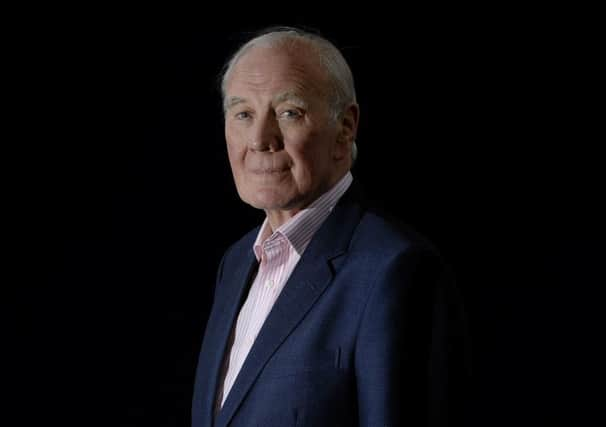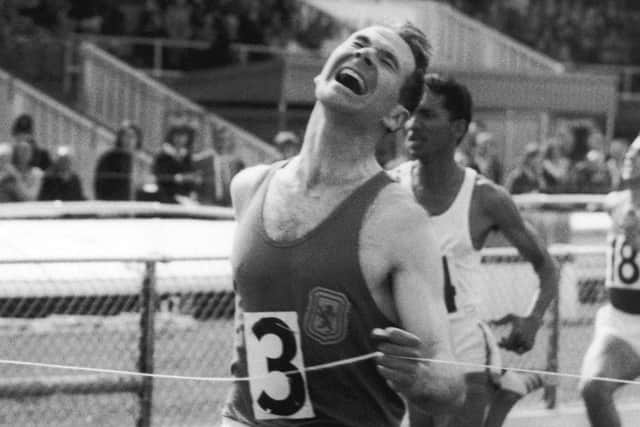Sir Menzies Campbell on the Commonwealth Games


I first became aware of the Empire Games as they were called then in 1954 when, in a black and white newsreel at my local cinema, I saw the peerless Roger Bannister, fresh from being the first man to break the Four Minute Mile barrier, triumph over a gritty Australian John Landy (who had also broken the barrier) in what was still the mile rather than today’s 1,500 metres. I little thought that, ten years later, I would meet and become friends with Bannister. It is not often you meet your childhood heroes and find that they are every bit as impressive in real life.
Wind on to 1958, when the Games were held in Cardiff and were fully televised for the first time. We had no TV set at home, but a schoolfriend did and his parents were generous in their hospitality perhaps because, by then, I was showing some rudimentary athletic prowess.
Advertisement
Hide AdAdvertisement
Hide AdBy 1962, I was 21 and the Games were held in Perth, Australia. I fully expected to be selected but, in spite of having equalled the Scottish 100 yards record and broken the record for 220 yards, I was not included in the team. It was as if the roof had fallen in – not mitigated in any way some years later when I learned that my omission was accidental rather than deliberate.


But, in 1966, it was the real thing and I was picked for Jamaica. The welcome was as warm as the climate but things were rather more basic than expected. The athletes’ village was the halls of residence of the University of the West Indies. As with students everywhere, their rooms were hardly a vision of pristine care, added to which no hot water was available for our two-week stay. A member of the Welsh shooting team, Lord Swansea, took one look at the accommodation and checked into the nearest Hilton Hotel. The rest of us were not so fortunate!
I called time on my athletics career a short time afterwards and so missed out on competing in front of a home crowd when, in 1970, the Games came to Edinburgh. By this time I had graduated to membership of the UK Sports Council, chaired by Britain’s first Sports minister, Dennis Howell – a benign dictator – and it was there that the decision to fund the stadium was taken. Meadowbank was where the great Eric Liddell trained for the 1924 Olympics in Paris and was the regular home of the annual Scottish Athletics Championship. The black cinder track was always either too loose because it was wet or too hard because it was baked by the sun. A new stadium was necessary.
The choice was between a £650,000 refurbishment of Meadowbank or a full-blown new build. I supported the new build successfully but failed to have the alignment of the track altered so as to avoid the prevailing winds. The new Meadowbank was state-of-the-art in 1970, but looks rather tired 44 years later!
The Edinburgh Games began well for Scotland and got better. Lachie Stewart, Ian McCafferty, Ian Stewart and Rosemary Stirling put the home team on the map. The performances were outstanding, the food was superb, the weather fair, and the stadium excellent. Not so the velodrome, which was open to the elements, but lasted long enough to provide Chris Hoy the opportunity to cut his teeth many years later. The Games were universally hailed as a success.
By now I was reporting for this newspaper for the princely sum of £150 for the duration of the Games. I squatted in the press gallery near the great Scottish sports journalist John Rafferty and Chris Brasher (the buccaneer of the support team Roger Bannister had in beating the Four Minute barrier) who was then writing for the Observer. Yet another hero confirmed in real life.
When recently I read again the pieces I wrote for the Scotsman, I experienced a mixture of pride and embarrassment. They provide an insight into the closed world of the athlete, are surprisingly accurate in their predictions, but rather naïve. I comfort myself with the fact that those were less sophisticated times!
Although not participating on the track, I did have another rather unusual role. It was intended that there should be a religious service in St Giles Cathedral to mark the opening of the Games. The independently minded parish minister Dr Whitley, rejected the organising committee’s proposals out of hand and invited me, rather than a priest, minister, or rabbi to deliver the sermon. Petrified did not sufficiently describe the experience!
Advertisement
Hide AdAdvertisement
Hide AdMarriage and career took over after 1970, but my association with the Commonwealth Games was not over. Edinburgh won the bid for the 1986 Games at a time when it was feared that the Games might wither away because of a lack of candidate countries willing to bear the expense of doing so. A steering group was formed and a decision had to be taken about the chairmanship of the Organising Committee. I was sounded out and agreed to allow my name to go forward. In the event, I was beaten by one vote in favour of a former Lord Provost of Edinburgh. I often say that this decision proves there is a God!
The 1986 Games were plagued by controversy. Fundraising was tortuous, threats of a boycott by Commonwealth countries turned into a reality, and the UK government refused to come to the financial aid of the organisers. The Games opened only because newspaper tycoon Robert Maxwell, seeing an opportunity, made a promise to raise the money necessary to fund the shortfall. This was a promise he had no intention of fulfilling but which allowed him to shake hands with the Queen and to plaster the stadium with advertising for the Daily Record and Sunday Mail, which he owned. The shortfall of some four and a half million pounds remained and suppliers of all kinds who had been persuaded that Maxwell would come good took the hit. When Margaret Thatcher visited the stadium, she was roundly and persistently booed.
Edinburgh and Scotland were embarrassed and, with the large scale boycott by mainly African countries offended by the British government’s alleged sympathy for apartheid South Africa, the very existence of the Games was once again challenged. By comparison with 1970, the 1986 Games were something to be forgotten and have been written out of history.
So what of Glasgow? With 1986 in mind, preparations have been conducted with punctilious attention to detail. The facilities are brilliant, from the new indoor Sir Chris Hoy Velodrome to the magical transformation of Hampden, home of Scottish football, into a world class athletics stadium. The fine, newly built athletes’ village can only be improved by Glasgow’s well-known enthusiasm for a warm welcome and a good party.
What gives the Commonwealth Games their continuing importance? On a mundane level, they are the only international sporting event where everyone speaks the same language. More significantly, they provide a useful stepping stone towards Olympic success.
They also, inevitably, have a political dimension. The Commonwealth is increasingly under strain over the issue of human rights, but where are equality and diversity more celebrated than on the track or in the boxing ring? In sport, everyone’s human rights are the same. Look out, Glasgow, the Commonwealth is coming.